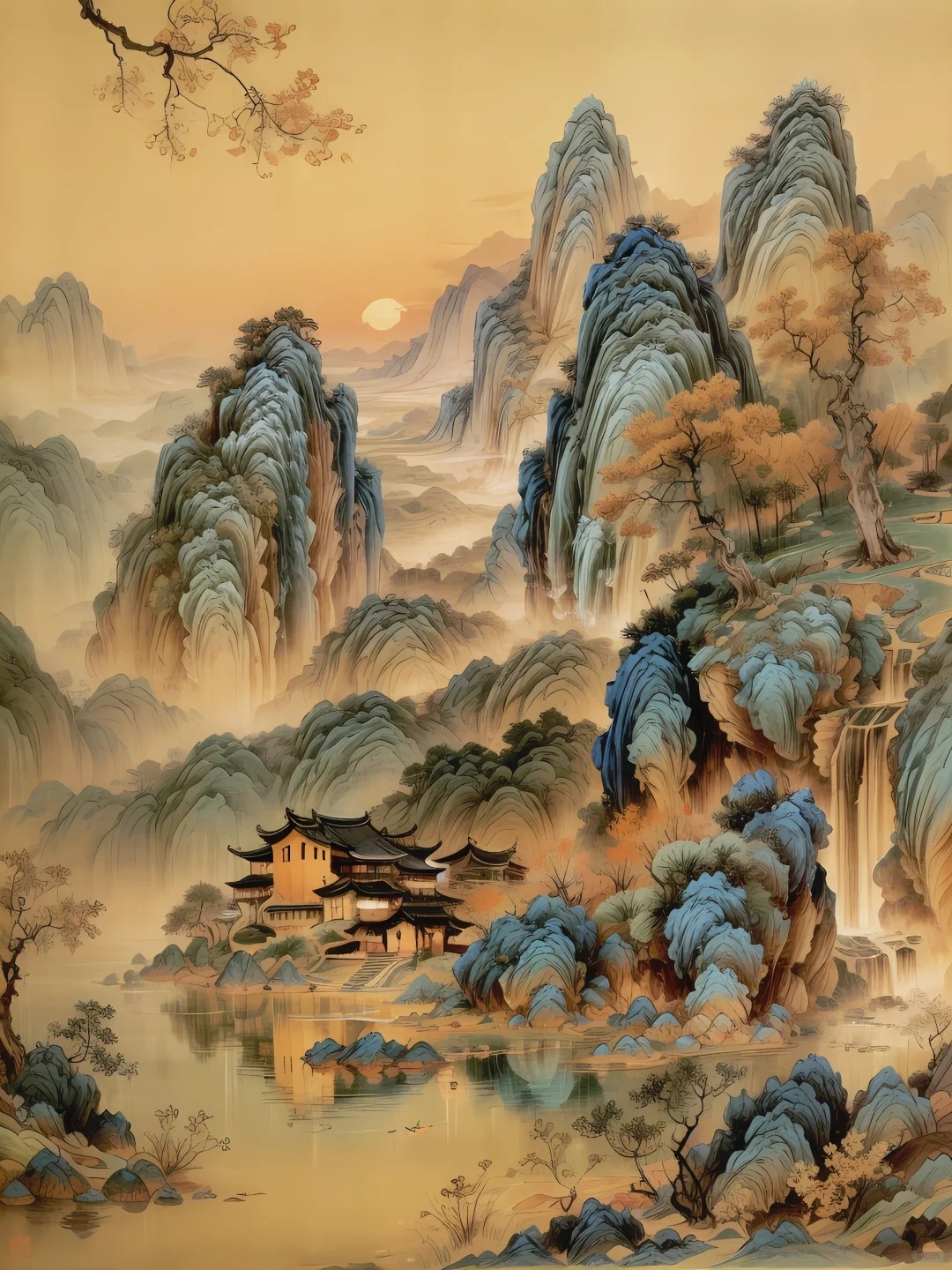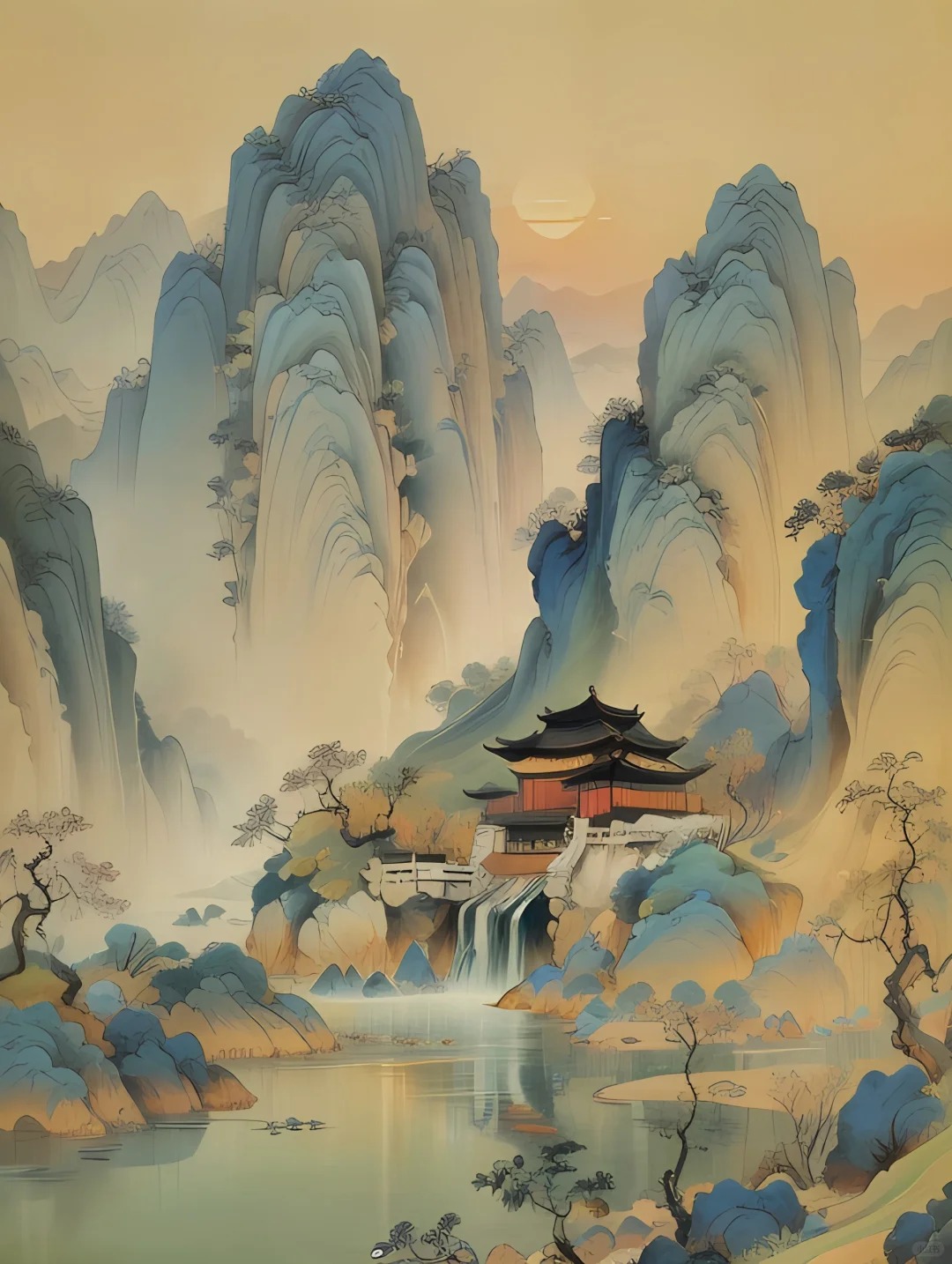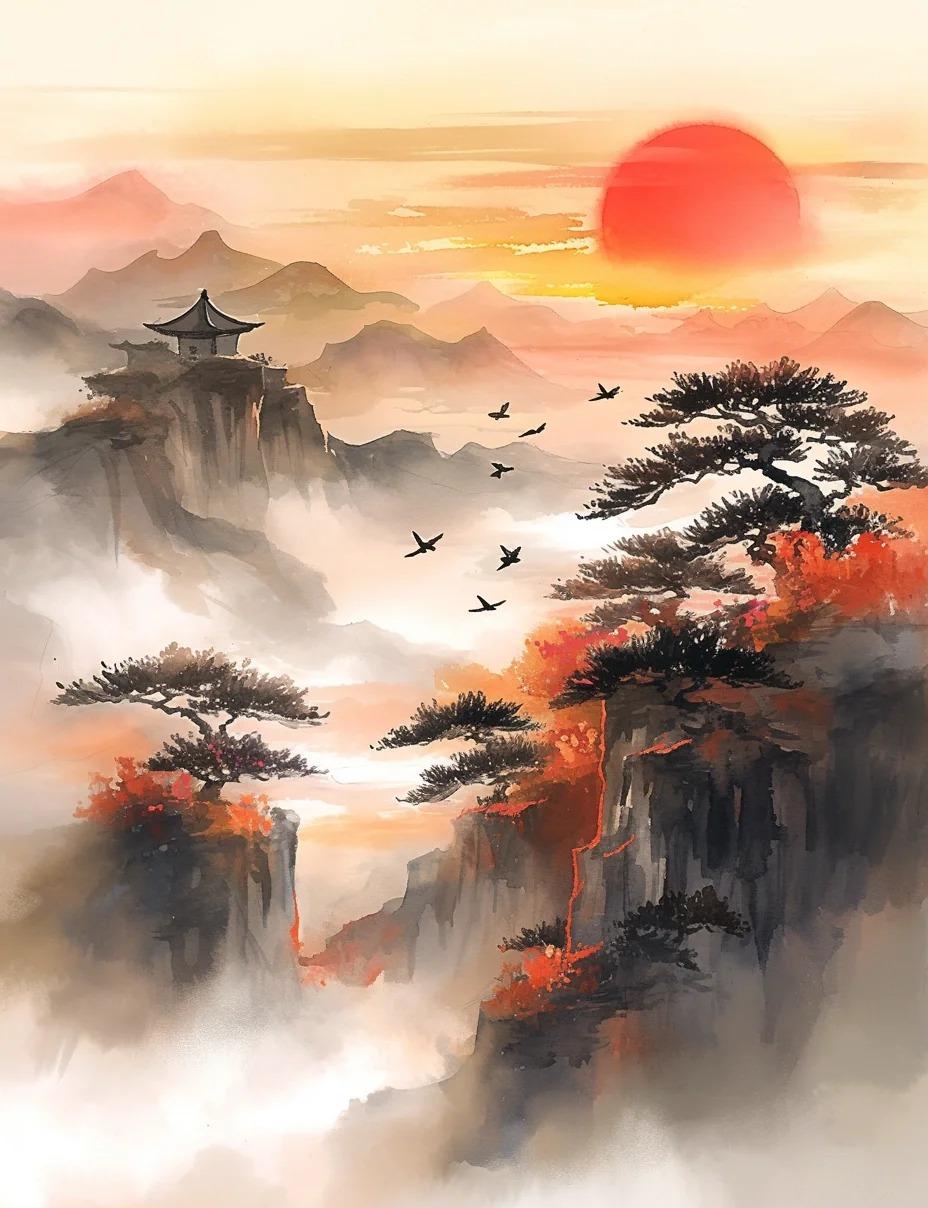Introduction to Chinese Painting
Chinese painting, with its history spanning over 2,000 years, stands as a testament to China’s rich cultural heritage. This art form is characterized by its unique blend of poetry, calligraphy, and visual artistry, setting it apart from Western painting traditions.
At its core, Chinese painting seeks to capture the essence or spirit of the subject rather than create a photorealistic representation. This philosophy has profoundly influenced East Asian art, shaping artistic traditions in countries like Japan and Korea.
The evolution of Chinese painting mirrors the country’s dynastic history, with each era contributing distinct styles and innovations.

Major Styles of Chinese Painting
Chinese painting encompasses several major styles, each with its own focus and techniques:
- Landscape painting (山水画 – shanshui hua): Depicts natural scenery, often with mountains and water.
- Bird-and-flower painting (花鸟画 – huaniao hua): Focuses on flora and fauna, often with symbolic meanings.
- Figure painting (人物画 – renwu hua): Portrays people, from historical figures to everyday life scenes.
- Literati painting (文人画 – wenren hua): Created by scholar-officials, emphasizing personal expression over technical skill.
These styles often overlap, with artists incorporating elements from multiple categories in a single work.

Techniques and Materials
The tools of Chinese painting are known as the “Four Treasures of the Study”:
- Brush (笔 – bi)
- Ink stick (墨 – mo)
- Ink stone (砚 – yan)
- Paper or silk (纸 or 绢 – zhi or juan)
Brush strokes are paramount in Chinese painting, with artists spending years perfecting their technique. The way a brush is held and moved can create a wide range of effects, from delicate lines to bold, expressive strokes.
While many Chinese paintings are monochrome, using only black ink, others incorporate color. Traditional colors are typically muted and natural, derived from mineral and plant sources.
Composition in Chinese painting often includes large areas of empty space, known as “leaving blank” (留白 – liubai). This technique invites the viewer’s imagination to complete the scene.

Symbolism and Philosophy in Chinese Painting
Chinese painting is deeply intertwined with Taoist and Buddhist philosophies. The goal is not merely to reproduce the appearance of a subject, but to capture its inner essence or spirit (写意 – xieyi).
Common symbols in Chinese painting include:
| Symbol | Meaning |
|---|---|
| Pine tree | Longevity and steadfastness |
| Bamboo | Resilience and flexibility |
| Plum blossom | Perseverance and purity |
| Chrysanthemum | Nobility and endurance |
These symbols often appear together in the “Four Gentlemen” (四君子 – sijunzi) theme, representing the four seasons and virtuous qualities.
Famous Chinese Painters and Masterpieces
Throughout history, numerous artists have left their mark on Chinese painting:
- Wang Wei (701-761): Tang Dynasty poet-painter, pioneered the Southern School of landscape painting.
- Fan Kuan (960-1030): Created the monumental landscape “Travelers Among Mountains and Streams”.
- Qi Baishi (1864-1957): Known for his whimsical depictions of small creatures and vegetables.
Each dynasty brought innovations: the Tang era saw the rise of figure painting, while the Song period is renowned for its refined landscapes and bird-and-flower paintings.

Modern and Contemporary Chinese Painting
The 20th century brought significant changes to Chinese painting. Artists like Xu Beihong introduced Western techniques, while others like Pan Tianshou sought to revitalize traditional styles.
Contemporary Chinese painters continue to push boundaries, blending traditional techniques with modern themes and media. Artists like Zeng Fanzhi and Yue Minjun have gained international recognition for their innovative approaches.
Current trends include a renewed interest in traditional ink painting, as well as experimental works that combine Chinese and Western elements.

Experiencing Chinese Painting as a Traveler
For art enthusiasts visiting China, there are numerous ways to experience Chinese painting:
- Museums: The Palace Museum in Beijing and Shanghai Museum house extensive collections of ancient masterpieces.
- Contemporary galleries: 798 Art District in Beijing showcases modern interpretations of Chinese painting.
- Workshops: Many cities offer painting classes where visitors can try their hand at traditional techniques.
When purchasing Chinese paintings, be wary of fakes. Buy from reputable galleries or directly from artists when possible. Look for the artist’s seal and pay attention to the quality of the paper or silk.
To truly appreciate Chinese paintings, consider these tips:
- Observe the painting from right to left, as Chinese is traditionally written.
- Pay attention to the empty spaces as much as the painted areas.
- Look for symbolic meanings beyond the literal depiction.
Chinese painting offers a window into the soul of Chinese culture, blending philosophy, poetry, and visual art. Whether you’re admiring a Song Dynasty landscape or a contemporary ink abstraction, each brushstroke carries centuries of tradition and innovation. As you explore this rich artistic heritage, you’ll discover not just beautiful images, but a unique way of seeing and understanding the world.





